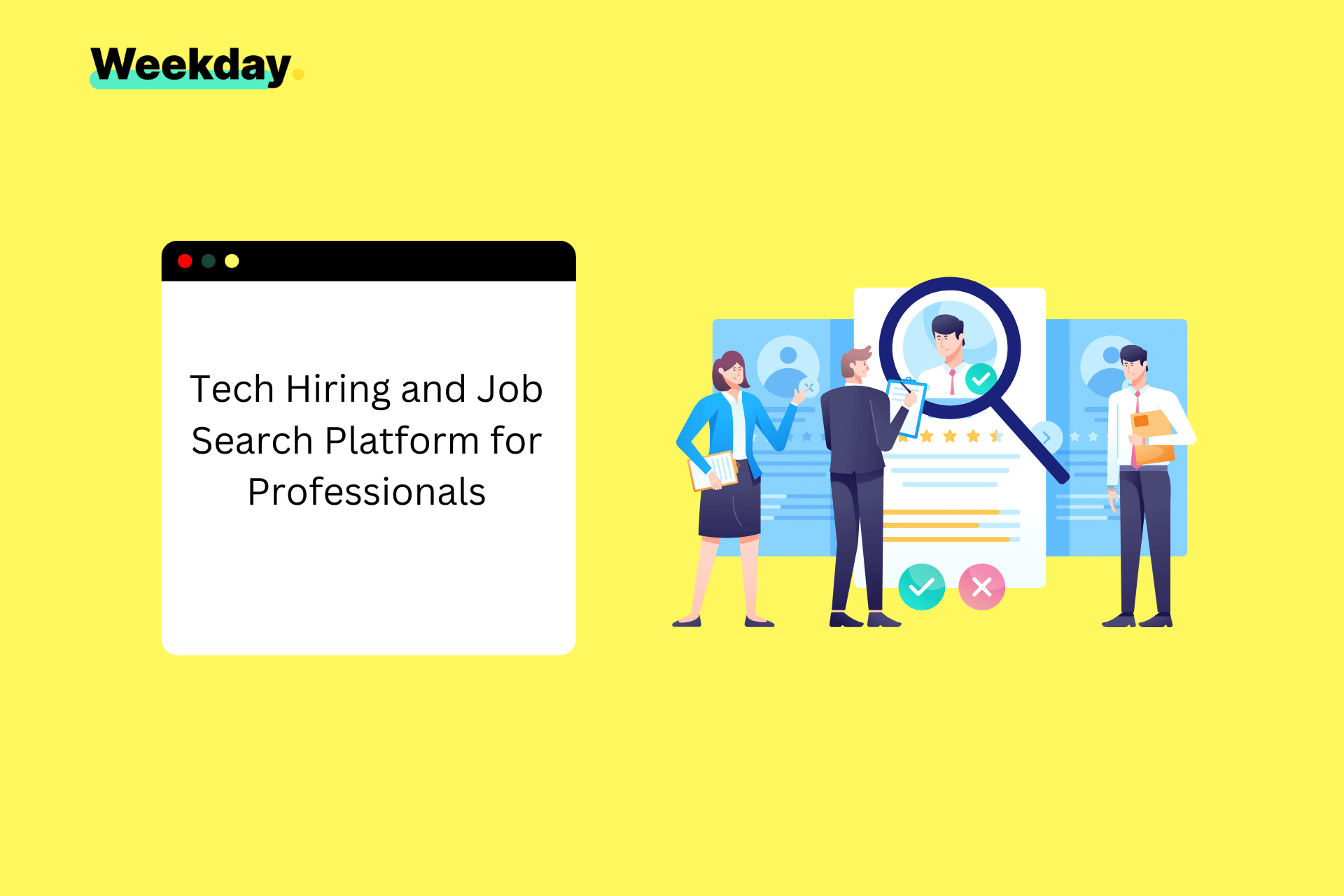Top Talent Recruitment Strategies
Unlock the power of top talent with smart recruitment strategies. Discover how to recruit right strategies for long-term organizational success.
"Hiring top talent shouldn't feel like trying to find a needle in a haystack. With the right strategies, you can turn that haystack into a magnet!"
In today's job market, finding top talent is critical for an organization's success. The right talent can drive innovation, enhance customer satisfaction, and secure a dominant position in the market. In this blog, we will explore strategies for attracting and retaining the best talent. Join us to discover how to turn the challenge of hiring top talent into one of your greatest opportunities for success.
Understanding Top Talent
Top talent refers to individuals who excel in their current roles and possess the potential to grow and adapt to an ever-changing business landscape. It requires a clear understanding of the specific characteristics that are valuable in your industry. Technical proficiency is often essential, but it is the combination of hard and soft skills that sets top talent apart.
- Exceptional Problem-Solving Abilities: They tackle challenges head-on and can think critically and creatively to find effective solutions.
- Adaptability and Flexibility: The capacity to adjust to new situations and challenges with ease in fast-moving business environments.
- Strong Communication Skills: Top talents are adept at expressing their ideas clearly and persuasively, fostering open and effective communication within teams.
- Leadership Potential: Even if not in a formal leadership role, these individuals demonstrate the ability to inspire and motivate those around them, guiding teams toward common goals.
- A Growth Mindset: They are committed to personal and professional development, constantly seeking opportunities to learn and improve.
[Weekday.works can provide access to a curated list of engineering talent that not only meets the technical proficiency required but also embodies the soft skills and growth mindset that sets top talent apart.]
Recognizing and valuing these qualities is the first step in cultivating an environment that attracts and retains these high-caliber professionals.
Current Recruitment Challenges

Hiring top talent is another way for your organization to succeed, but it's not easy. In today's job market, challenges make the process tough. Let's explore these hurdles and trends affecting how companies find and hire the best.
- Fierce Competition: With almost every company on the lookout for star players, the competition is intense. Top talent has more options to choose from, making it harder for any single organization to stand out.
- High Expectations: Today's job seekers, especially the highly skilled ones, are looking for more than just a good salary. They want a great work culture, opportunities for growth, work-life balance, and more.
- Rapid Technological Changes: As technology evolves, so do the skills needed to keep up with it. This means companies are often in a race to find people who are not only tech-savvy but also up-to-date with the latest advancements in their field.
- Global Talent Pool: While having access to a global talent pool is an advantage, it also means navigating the complexities of remote work, cultural differences, and sometimes, immigration policies.
- Brand Perception: A company's reputation as an employer plays a significant role in attracting top talent. Negative perceptions or lack of brand awareness can hinder recruitment efforts.
Market Trends Affecting Talent Acquisition
- Shift Towards Remote Work: The COVID-19 pandemic accelerated the shift towards remote and flexible working arrangements, particularly in sectors where work can be done digitally. For many candidates, especially in tech and office-based roles, there is now an expectation for the option to work remotely, at least part-time. This emerging trend can be a deal-breaker when not offered by companies.
- Emphasis on Diversity and Inclusion: There's a growing expectation for companies to not only value diversity and inclusion but to actively demonstrate it. Organizations that fail to show commitment to a diverse and inclusive workplace may struggle to attract top talent.
- Use of AI and Automation in Recruitment: Artificial intelligence and automation tools are becoming more common in the recruitment process. These can help streamline finding and screening candidates but also require companies to keep up with new technologies to stay competitive.
- Candidate Experience: The recruitment process itself, from application to interview to onboarding, is under scrutiny. A smooth, respectful, and engaging candidate experience can make a difference in attracting top talent.
To tackle the challenges and trends in the job market, it is important to have a strategic approach towards talent acquisition.
[Weekday.works stays ahead of market trends by facilitating remote hiring through its platform, making it easier to tap into the global talent pool.]
Importance of Effective Recruitment Strategies
Building a team is like solving a puzzle. Each piece must fit perfectly to see the bigger picture. Good recruitment strategies are crucial to finding and hiring the right people. Let's discuss why they are essential for long-term benefits.
Why Smart Hiring Strategies Matter
- Save Time and Money: Ever heard the saying, "Hire slow, fire fast"? Taking the time to find the right person for the job means you spend less time and money later trying to fix hiring mistakes.
- Get Ahead of the Competition: Imagine two soccer teams. One has a strategy to get the best players, while the other just picks anyone who can kick a ball. Which team do you think will win? It's the same in business. Companies with smart hiring plans get the best people and usually come out on top.
- Happy Team, Happy Life: When you bring in top-notch people who love what they do and do it well, it makes everyone else happy and more productive. It's like adding a superstar to your sports team; everyone plays better.
Long-Term Benefits of Hiring Top Talent
- They Raise the Bar: Great hires don't just do their jobs well; they inspire everyone around them to step up their game too. It's contagious!
- Innovation and Growth: The best people bring fresh ideas and new energy. This can lead to cool new products, services, or ways of doing things that help your company grow.
- Stronger Brand: When you have amazing people working for you, it's not just your products or services that shine; your company's reputation gets a boost too. People want to work for you, customers want to buy from you, and other businesses look up to you.
- Future Leaders: Today's smart hire could be tomorrow's leader. Investing in top talent now means you're building your company's future leadership, which is pretty awesome.
So, finding and hiring the right people isn't just about filling a seat. It's about thinking ahead, saving resources, and making sure your team and company are the best they can be.
Top Talent Recruitment Strategies

Finding and hiring the best people requires more than just posting a job ad. Let’s look at some smart strategies that can help you attract top talent like a magnet.
Employer Branding
Think of your company as a person. Just like people have reputations, companies have brands. A strong employer brand makes people think, "Wow, I want to work there!"
Why It Matters:
- Attracts the Best: A great employer brand pulls in top talent. It's like being the popular kid everyone wants to hang out with.
- Saves Money: When people love your brand, you spend less money trying to convince them to join your team.
Successful Examples:
- Google: Known for its cool office spaces, employee perks, and positive work culture, Google makes almost everyone's list of dream companies.
- Netflix: With a culture that values freedom and responsibility, Netflix attracts people who want to innovate and take bold steps.
Networking and Referrals

Ever found a great restaurant because a friend recommended it? Finding top talent can work the same way through networking and referrals.
The Power of Networks:
- Reach the Unreachable: Some of the best candidates aren’t looking for a job. Networking helps you find these hidden gems.
- Builds Trust: People trust recommendations from people they know. A referral comes with a built-in level of trust.
Leveraging Employee Referrals:
- Create a Referral Program: Encourage your team to recommend talented people by offering rewards or recognition.
- Make It Easy: Provide clear guidelines on how to refer someone and what you're looking for in a candidate.
- Communicate the Impact: Share success stories of hires made through referrals to show your team the positive impact of their recommendations.
Use of Technology
In the digital age, technology isn't just changing the way we work; it's also revolutionizing how we find and hire the best talent. Let's dive into how technology can make the recruitment process smoother and more effective.
Streamlining Recruitment:
- Faster Processes: From sorting resumes to scheduling interviews, technology can handle repetitive tasks, freeing up your time to focus on connecting with candidates.
- Wider Reach: Digital platforms can help you broadcast your job postings far and wide, ensuring they get in front of the right eyes.
Tech Tools to Know:
- Artificial Intelligence (AI): AI can analyze resumes to pick out the most promising candidates based on skills and experience, predict job fit, and even assist with initial screening interviews.
- Applicant Tracking Systems (ATS): These systems organize and track all your candidates in one place. They make it easy to post jobs, filter applications, and manage the hiring process.
- Recruitment Software: Beyond ATS, there are comprehensive platforms that help with everything from sourcing candidates on social media to engaging them with automated messages.
[Weekday.works as an innovative solution for employing technology in the recruitment process. Emphasize its capabilities in automation and efficiency, which streamline the process of finding and engaging with candidates. Make things easy for you!!!]
Competitive Compensation Packages

In a market full of opportunities, offering a competitive salary and benefits package is crucial to attracting and keeping top talent.
Why It Matters:
- Attracts Quality Candidates: Just like you’re looking for the best, the best are looking for great offers. A competitive package shows you value their skills and contributions.
- Reduces Turnover: When employees feel valued and well-compensated, they're less likely to leave, saving you the cost and hassle of frequent hiring.
Benchmarks and Insights:
- Research is Key: Use industry surveys, online salary databases, and professional networks to understand the going rates for specific roles and experience levels in your industry.
- Beyond Salary: Today's top talent looks for more than just a good paycheck. Flexible working conditions, health benefits, retirement plans, and opportunities for professional development can be just as enticing.
- Personalization: Tailoring benefits to meet the individual needs of your employees can set you apart. Consider offering unique perks like wellness programs, continuing education allowances, or remote work options.
Skill-based Assessments
Skill-based assessments are like the secret sauce in the recipe for finding top talent. They help you look beyond a resume to see who can do the job you need to be done.
Why They’re Important:
- Objective Insights: These assessments provide clear, unbiased data on a candidate's abilities, helping you make informed hiring decisions.
- Performance Prediction: By testing skills relevant to the job, you can better predict how a candidate will perform in the role.
Best Practices:
- Align with Job Requirements: Make sure the assessments test for skills that are directly relevant to the job. This keeps the process fair and focused.
- Use a Mix of Assessments: Different types of assessments (practical tasks, simulations, quizzes) can provide a well-rounded view of a candidate's abilities.
- Keep It Balanced: While assessments are valuable, they should be just one part of a broader hiring process that considers experience, cultural fit, and potential.
- Feedback Matters: Provide candidates with feedback after assessments. This improves the candidate experience and can help them in their professional development.
Diversity and Inclusion
Diversity isn’t just a buzzword; it’s a competitive advantage. A mix of backgrounds, perspectives, and experiences can lead to more innovative ideas and better decision-making.
Why It’s Important:
- Broader Talent Pool: Embracing diversity means you have a wider range of candidates to choose from.
- Better Business Results: Diverse teams are more creative, solve problems faster, and are better at understanding and serving a diverse customer base.
Strategies for Inclusion:
- Bias-Free Recruiting: Use language in job postings that are welcoming to all, and implement blind screening processes to minimize biases.
- Inclusive Culture: Foster an environment where all employees feel valued and included. This can involve training programs, mentorship opportunities, and inclusive policies.
- Diverse Hiring Panels: Including diverse perspectives in the hiring process can help ensure a fairer, more balanced assessment of candidates.
- Measure and Improve: Track diversity metrics within your hiring process and team composition. Use this data to identify areas for improvement and to set actionable goals.
Measuring Success
To ensure your recruitment strategies bring in top talent, measure their success using Key Performance Indicators (KPIs). Here are the essential KPIs:
Key Performance Indicators (KPIs):
- Time to Fill: This measures the number of days from when a job opening is posted to when an offer is accepted. A shorter time to fill can indicate efficient processes, but it's also important to balance speed with quality.
- Quality of Hire: Assessing the performance and contribution of new hires after a certain period can indicate the success of your recruitment strategies. This can be measured through performance ratings, achievement of set milestones, or direct feedback from managers.
- Candidate Satisfaction: Candidate experience is crucial, as it impacts your employer brand. Measuring satisfaction through surveys at various stages of the hiring process can provide valuable feedback for improvement.
- Cost Per Hire: This involves calculating the total costs associated with the recruitment process (advertising, recruiter fees, technology costs, etc.) divided by the number of hires. This KPI helps in understanding the efficiency and financial impact of your recruitment strategies.
- Offer Acceptance Rate: The ratio of accepted offers to total offers made is a direct indicator of how attractive you propose to top talent. A lower rate may prompt a review of your offer terms or the competitiveness of your compensation packages.
- Diversity of Hires: Measuring the diversity of your new hires can help ensure your recruitment strategies align with broader organizational goals for diversity and inclusion.
- Retention Rate: The ability to retain new hires, particularly those identified as top talent, is a critical measure of success. A high turnover rate among recent hires can signal mismatches between candidate expectations and job realities.
Importance of Continuous Improvement:
Recruitment is not a set-and-forget process. The job market evolves, new technologies emerge, and candidate expectations change. Continuous improvement ensures your strategies remain effective and competitive. Here’s how to embrace it:
- Regular Review: Schedule periodic reviews of recruitment strategies and KPIs to identify trends and areas for improvement.
- Feedback Loops: Incorporate feedback from candidates, new hires, and hiring managers into your strategy adjustments. This feedback is invaluable for enhancing the candidate experience and refining your approach.
- Stay Informed: Keep up with industry trends and emerging best practices in recruitment. Attend conferences, participate in forums, and read relevant publications.
- Innovate and Experiment: Don't be afraid to try new approaches, whether it’s new sourcing channels, assessment tools, or engagement strategies. Measure the impact of these innovations and adapt based on results.
By measuring the success of your recruitment strategies through these KPIs and committing to continuous improvement, you can enhance your competitive edge and ensure long-term organizational success.
Conclusion
Securing top talent is key to shaping your organization's future. Through smart recruitment strategies, technology use, and a commitment to diversity, businesses can attract and keep the innovative talents needed for success.
“The path to effective talent acquisition is a continuous one, requiring ongoing adaptation and learning.”




